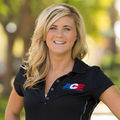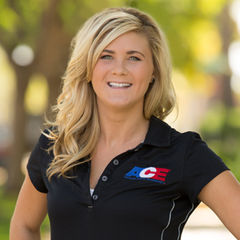Muscular Fitness Assessments
Assessments performed at the start of a client’s program can be used to track progress and increase motivation. These assessments are divided into four categories: anthropometric measurements (body size or body composition), cardiovascular assessments, muscular fitness assessments, and sport-skills assessments. This blog will discuss muscular fitness assessments, which evaluate an individual’s muscular strength and endurance. Both are important for activities of daily living (ADL), positively impact resting metabolic rate (RMR), protect against osteoporosis, and enhance glucose tolerance. There are two types of muscular fitness assessments: muscular-endurance tests, which assess the ability to resist fatigue; and muscular-strength tests, which assess the maximum amount force an individual can produce in a specified number of repetitions (hence the term repetition max or RM). Again, these assessments can be very useful for tracking progress and motivating your clients, routinely performing them can be an essential part of a client’s program.
Before we discuss these assessments in more detail, let’s first talk about the time and place to use them. Because of the physical demand of the assessments, be sure that your client has the physical capacity to participate. If a client is new to exercise, the focus of his or her initial program may need to be on stability and mobility [phase 1 of the ACE Integrated Fitness TrainingTM (ACE IFTTM) Model]. Therefore, the exercises performed in these assessments might be too demanding and could potentially injure the client. Also, if you know the client is deconditioned, he or she probably won’t perform very well, so there is no need to do these assessments and potentially risk discouraging further participation. Once your client has mastered movement training and is progressing to load training (progressing from phase 2 to phase 3 of the ACE IFT Model), performing these assessments would be appropriate. Use these assessments at your discretion depending on your clients’ fitness level and goals.
When performing 1 RM assessments, it is important to follow the designated protocol for each test. Most tests recommend completing an initial warm up set with ~50% of the anticipated 1-RM and allow for five to 10 repetitions. The use of 1-RM prediction tables eliminates any guess work when determining a starting weight. you can predict a client’s estimated 1-RM by knowing the amount of weight they typically use for an exercise and the maximum number of repetitions that can be completed with that load. Because there is a certain amount of risk associated with maximal exertion submaximal strength tests may be more appropriate for certain clients to determine a likely 1-RM. You can use the 1-RM Repetition Table (pictured) to determine an estimated 1-RM without the risks associated with performing maximal exertion.

Key Topics to Remember:
- For each assessment, make sure you know the objective, for whom it’s appropriate for (any contraindications), and any advantages/disadvantages.
- How to calculate a predicted 1 RM using the 1-RM repetition percent values
- How to interpret results when compared to those of the same age and gender
For information on other types of physiological assessments, read our Anthropometric Measurements and Cardiovascular Assessments blogs.




 by
by 











